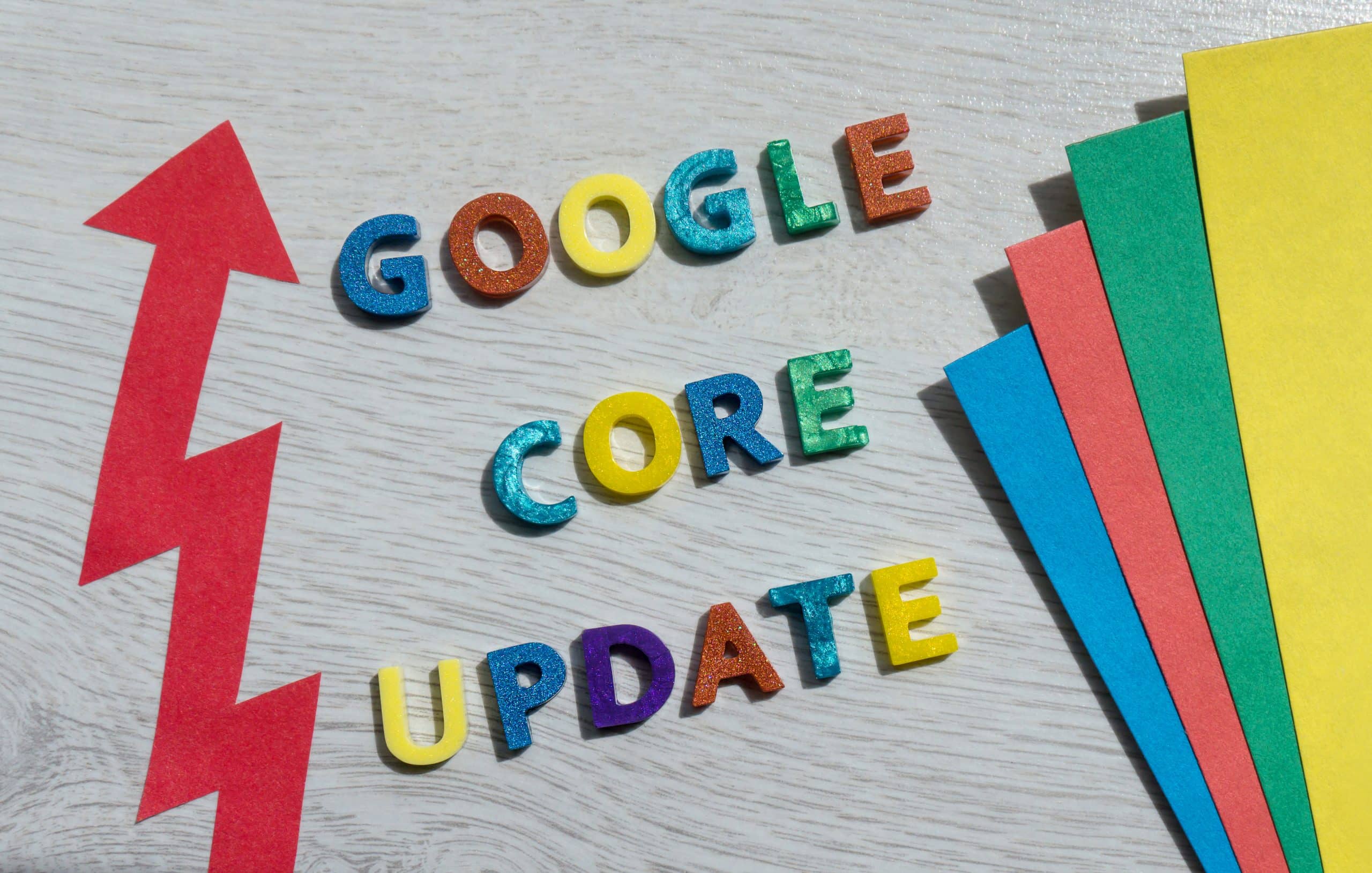- What We’ve Seen Since Recent Updates Rolled Out
- The Update’s Winners: Independent and Niche Publishers
- Bad News for Sites with Thin Content
- E-E-A-T Matters More Than Ever
- Some Sites Bounce Back Faster
- Spam Update
- How Recent Core Web Vitals Updates Impact Ads
- Frequently Asked Questions (FAQs)
- A Final Thought
Any time Google updates its Core Web Vitals, it enacts changes that impact marketing efforts across the globe. Unfortunately, those changes often aren’t clear until well after the changes are made, but by learning about them, you can adjust your strategy to stay on top of the game.
Google’s more recent updates continued to prioritize useful content, doing their best to promote authentic, user-generated content that brings value to its users. But, while these updates create more challenges for marketers, they also bring opportunities: The key is to understand what those opportunities are so that you can make the most of them.
What We’ve Seen Since Recent Updates Rolled Out
As mentioned, marketers often don’t get the full picture of these updates until some time has passed. For that reason, as of the time of writing, the changes made on August 15, 2024, are still the most notable. In fact, that particular update brought one of the most dramatic shifts for publishers in recent years.
Generally speaking, the August 2024 Core Web Vitals update was designed to build on the helpful content update that Google launched in 2022. This update prioritizes content that helps users, versus content designed to rank. Now that helpful content is a foundational part of Google’s algorithm design, subsequent updates seek to improve it, always deprioritizing content that Google deems “unhelpful.”
The Update’s Winners: Independent and Niche Publishers
One of Google’s goals with the August 2024 update was to boost content by smaller, independent sites that were penalized in the disruptive March 2024 update. As a result, these niche sites reported increased visibility. Experts urged these smaller sites to focus on creating useful content that will appeal to the refreshed algorithms.
The change also highlights the importance of releasing high-quality content in your defined niche. If you’re a smaller publisher, you can shine by doubling down on your specialized expertise.
Bad News for Sites with Thin Content
Unfortunately, some sites saw a drop in rank after the update. In keeping with Google’s usual goal to prioritize what it deems helpful content, Google deprioritized sites that it viewed as having “thin content.” Generic, low-quality blog posts and articles were seen as not satisfying users’ needs and therefore lost out to sites with content considered more useful.
The update particularly seemed to target content that was designed solely to rank. If your site is jam-packed with keywords and written only to dominate search results, you might need to rethink your strategy. While search engine optimization (SEO) is still important, Google’s focus on helpful content has many marketers shifting toward deep dives into topics that answer typical user questions.
E-E-A-T Matters More Than Ever
Over the past few years, Google has shifted to focus on something called E-E-A-T. This key indicator of authority is now part of Google’s core ranking system, so any tweaks will impact sites that don’t prioritize it in their content. This is especially important if your content aligns with something Google calls Your Money or Your Life: If your content impacts people’s bank accounts or health, you’ll need to pay close attention to these guidelines to hold your rank through Google’s updates.
So what is E-E-A-T? Simply put, it’s the combination of:
- Experience: Google likes content by creators with lived experience. Whether you’re reviewing products or offering financial advice, demonstrate that you have firsthand experience.
- Expertise: Bylines and bios can help you show that your content is created by people with subject matter expertise. You can also cite reputable sources and studies to show expertise.
- Authoritativeness: Google looks at your site’s overall “authority,” which is simply the degree to which you’re seen as a valued source in your industry. You can boost authoritativeness by focusing on publishing high-quality content while working to have respected sites link to your content.
- Trustworthiness: Transparency is important to Google’s algorithms. Keeping updated contact information and being clear about who creates your content helps with this.
These ranking factors show Google’s commitment to connecting readers with the best source for every search query. For those publishers who saw a drop after 2024’s core updates, a shift in strategy is likely essential. You should also conduct a full audit of your website and remove any thin, outdated material.
Some Sites Bounce Back Faster
At one time, a Google update meant months of scrambling to recover. More recent updates haven’t been quite as debilitating: Some sites reported being able to recover their rank position relatively quickly after the August 2024 update did its damage. Google even has tips for marketers specifically related to rank recovery.
That said, not all sites will recover. After its March 2025 update, Google’s search liaison stated that some sites don’t deserve to rank. Even with the best intentions, these sites simply don’t provide a satisfying page experience for users. With more updates coming, it’s possible some publishers will recover their rank, but that isn’t guaranteed, especially for sites that don’t make adjustments to match Google’s focus on user experience.
Spam Update
Earlier in 2024, Google released an update that penalized three behaviors it considers spam. This was in response to complaints that spammy content was crowding search results. They are:
Expired Domain Abuse
Also known as “domain squatting,” this practice involves bad actors buying expired domains, then taking advantage of their previous reputation to reach users with low-quality and/or manipulative content. The domain may even have lingering backlinks that can boost its ranking. Google has added this type of content to the list of spam its algorithm targets.
Scaled Content Abuse
This policy targets mass-produced content geared specifically toward manipulating rankings. While Google was already addressing mass-produced programmatic content, the March 2024 update broadened this policy’s scope to include any high-volume content. This particularly impacts sites that display a large volume of content that doesn’t add value.
Site Reputation Abuse
Sites that add low-quality third-party pages with little oversight should pay attention to this update. Google is targeting sites that have this additional content through a practice known as Parasite SEO. At the time of the update, Google gave content owners time to block low-quality content from being indexed, but that offer expired in May 2024.
How Recent Core Web Vitals Updates Impact Ads
Organic search isn’t the only focus of Google’s Core Web Vitals updates — ad revenue has also been impacted by them. Here are some recent changes advertisers have seen:
INP Replaces FID
Previously, Google used First Input Delay (FID) as a metric to determine how responsive your site feels to users. In March 2024, Interaction to Next Paint (INP) officially replaced FID. Developers were forced to make the switch to INP as Google phased out support for the older technology.
Ad Revenue Impact
If your Core Web Vitals score is low, you could see an impact on the effectiveness of your ad campaigns. (You can find your score by navigating to the “Enhancements” section on your site’s Google Search Console and selecting “Core Web Vitals.” ) If your site load time is slow, consumers may leave your page before your ads fully display, leading to missed impressions. Further, a poor Core Web Vitals showing could affect your eligibility for AdSense or AdX placements.
Frequently Asked Questions (FAQs)
What was the main focus of Google’s August 2024 Core Web Vitals update?
The August 2024 update focused on prioritizing useful, people-first content while also demoting pages that were built specifically to manipulate search rankings. In the process, the update gave more visibility to smaller and independent publishers and original content. It also incorporated Google’s new spam policies.
My site was hit hard by the August 2024 update. What should I do?
Your first step, if your site was impacted by the August 2024 update, should be to conduct a thorough website audit. Remove any outdated pages and content that wasn’t created with the user in mind. Moving forward, avoid posting content solely to rank. Each piece of content should address its corresponding search query. And, have patience: Improving ranking takes time, but generating quality content can lead to better results from future updates.
Are AI-generated articles considered spam now?
Artificial-intelligence (AI)-generated content is not automatically marked as spam by the algorithms. Google evaluates intent and quality: If your AI-generated content is helpful, accurate, and clearly serves users, it will rank alongside human-generated content. However, if you’re creating hundreds or thousands of low-quality pieces in the hopes of ranking, you could fall under Google’s crackdown on spam, but that applies whether you’re using AI or not.
A Final Thought
Google’s August 2024 update continued its focus on helpful content, and that focus had a direct impact on some publishers. For marketers, this means doubling down on original, helpful content and removing unhelpful, outdated content and tightening editorial oversight. As always, building a site that provides a useful experience is top priority, but Google now rewards those efforts.



